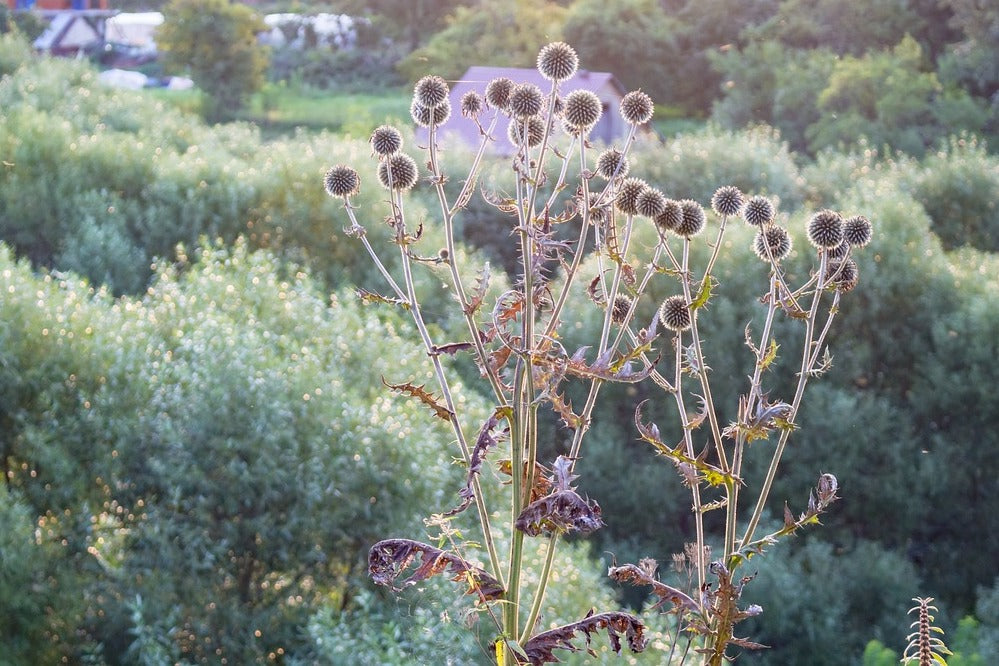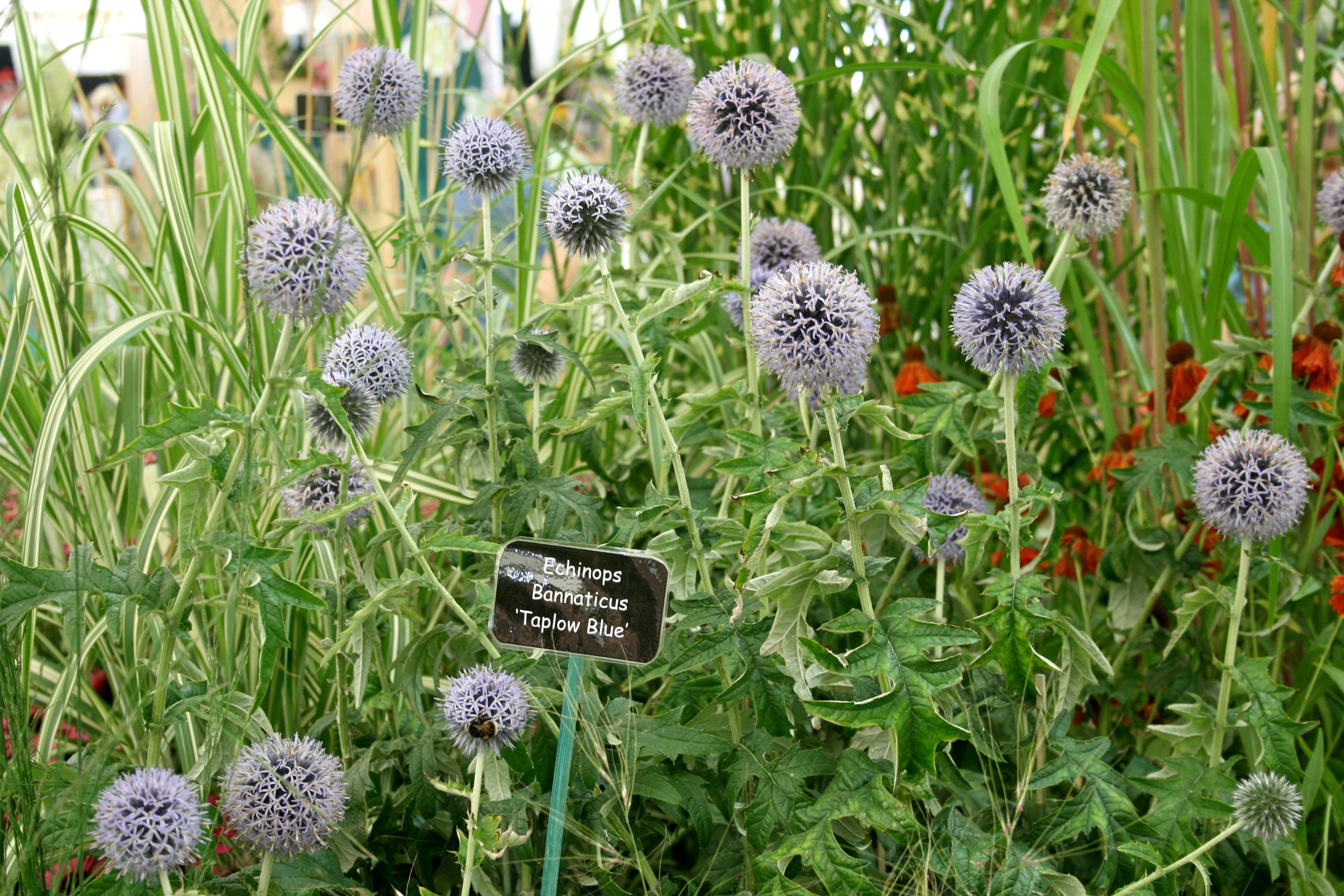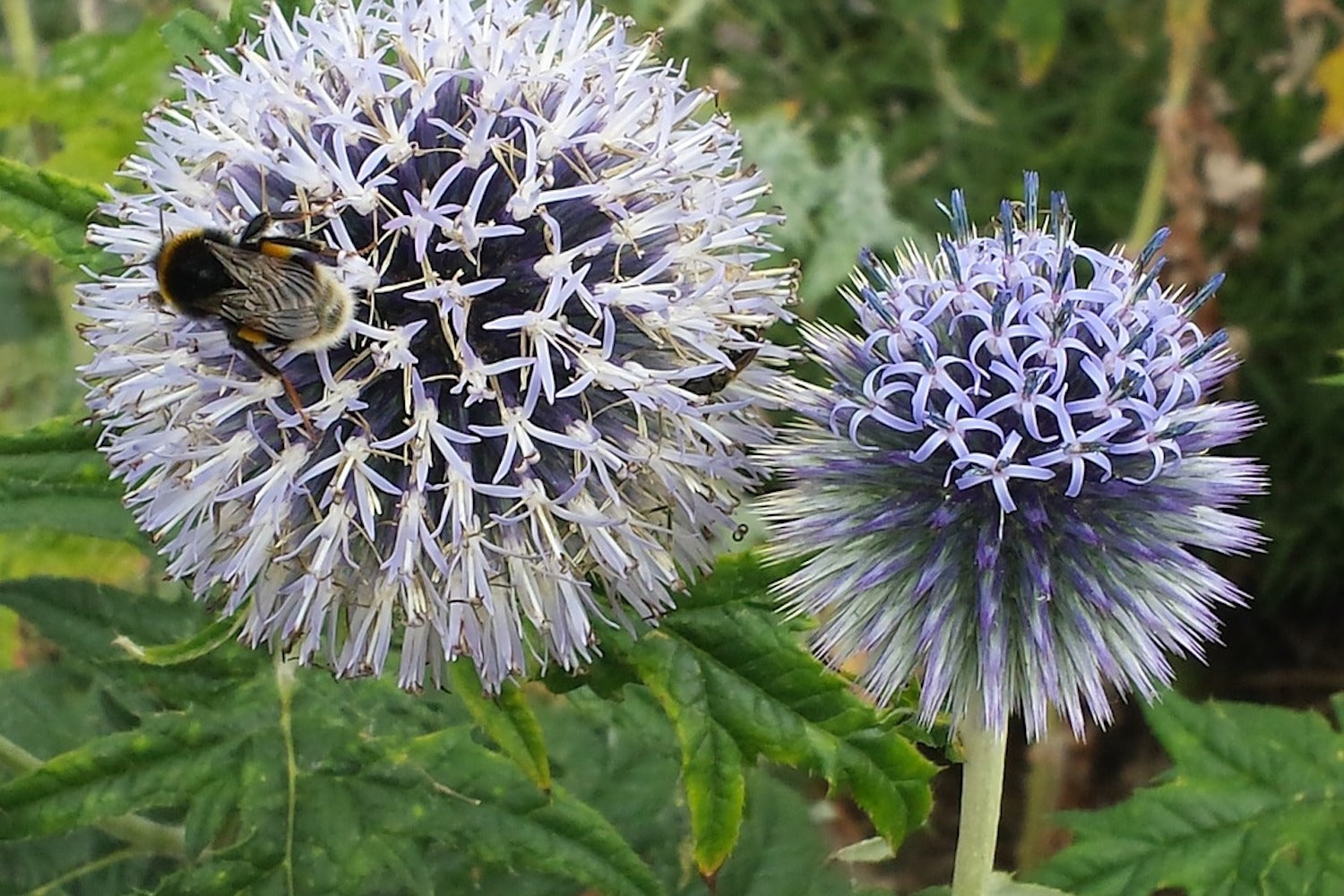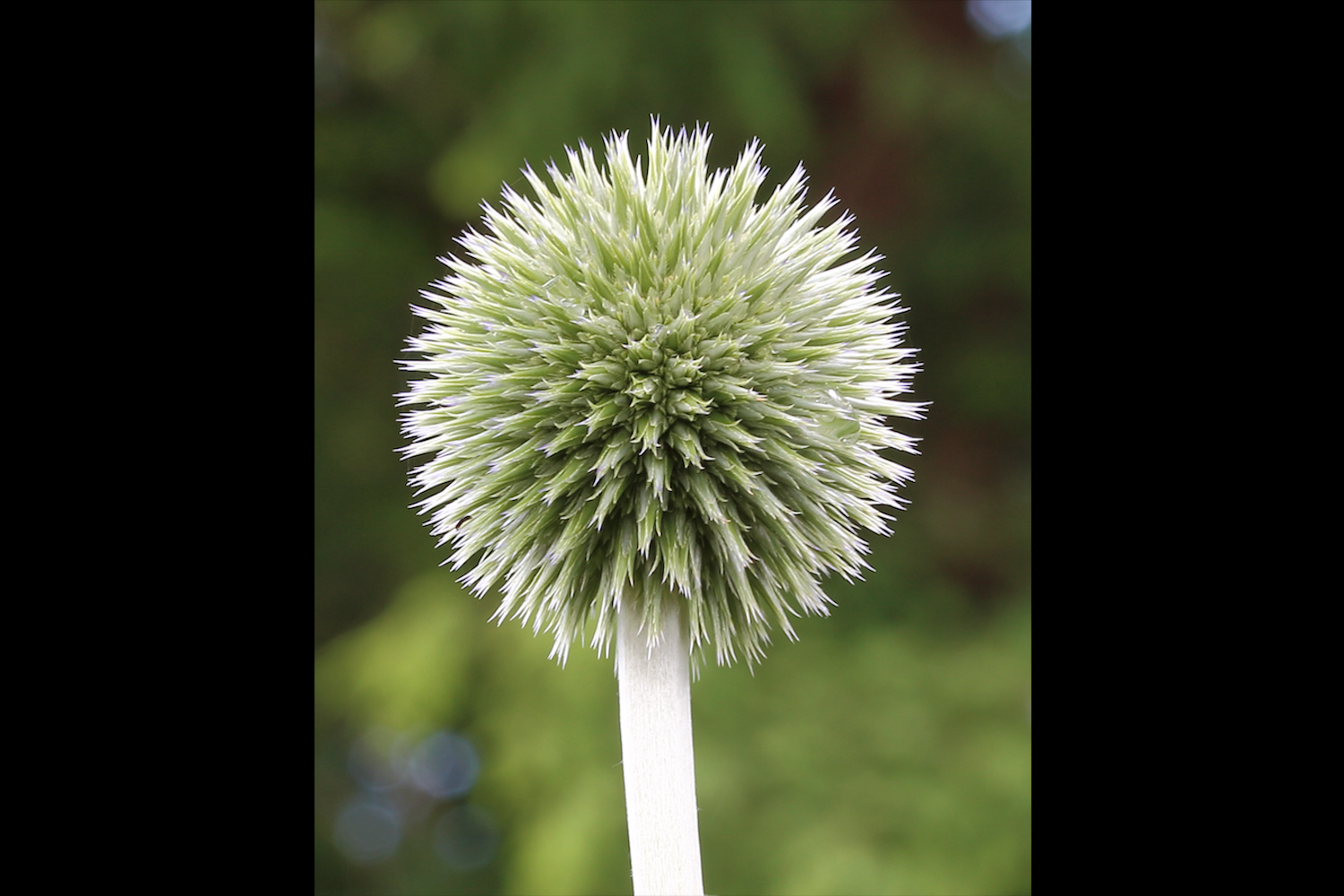Echinops bannaticus 'Taplow Blue'
Approx. 0.5 litre pot
About this cultivar:
Echinops bannaticus 'Taplow Blue' is a robust, upright herbaceous perennial, with divided, prickly dark green leaves whitish beneath. Rounded, blue flower heads on branched, leafy stems. Insects love it and its taller height seems to make this fact all the more visible.
The species name refers to Banat which is a region of southwestern Romania where plants are native. The bannaticus species tends to grow taller than the ritro species. Also bannaticus flowers tend to grey-ish blue whilst ritro tends to steely blue.
- Position: Full sun, partial shade
- Soil: Almost any soil, grows well in Ballyrobert
- Flowers: July, August, September, October
- Other features: Grows well in Ballyrobert, Bees and Butterflies, Interesting Foliage or Fruit, Cut Flowers or Dried Flowers
- Hardiness: H7 - Hardy in the severest European continental climates (< -20°C), Fully hardy - grows well in Ballyrobert!
- Habit: Clump forming, bushy
- Foliage: Deciduous
- Height: 120 - 180 cm (4 - 6 ft)
- Spread: 60 - 90 cm (2 - 3 ft)
- Time to full growth: 2 to 5 years
- Plant type: Herbaceous Perennial
- Colour: Green, blue
- Goes well with: Verbena bonariensis, Verbascum, Perovskia, Aconitum, Artemisia, Achillea, Iris, Deschampsia or even Rudbeckia. Thalictrum!
About this genus:
Echinops (EH-ki-nops)is a genus of about 120 species of flowering plants in the family Asteraceae, commonly known as globe thistles. Echinops can be annuals, biennials or perennials with simple or pinnately lobed, spiny leaves and spherical blue or whitish flower-heads. As always most of what we sell is perennial. If it isn’t, don’t worry, we mention it!
They are native to Europe east to central Asia and south to the mountains of tropical Africa. The genus name comes from the Greek words echinos meaning a hedgehog and ops meaning appearance in reference to the flower heads.
As usual books tell you they are “easily grown in average, dry to medium, well-drained soils in full sun. Tolerates a wide range of soils, including poor, infertile, dry ones, as long as well-drained. Avoid rich soils.” But….. we grow most of our in rich, heavy, wet clay!?!? So try and see…. Books, eh? Who need them?!
This is a taprooted plant that is difficult to divide or transplant.
Provides good colour and contrast in the perennial border, especially toward the back, or in the cut flower garden. I would almost go as far to say this is grown mainly for cut flowers!










